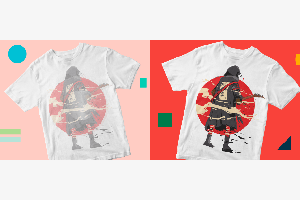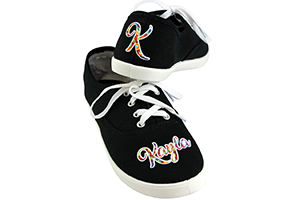April 1, 2013
How would you rate your business’ success? Are you making the money you thought you would or are you struggling for every dollar? Do you have a thriving customer base with plenty of work to keep you busy or are you sitting by the phone wishing it would ring?
If you haven’t figured it out yet, owning and operating a small business — specifically one engaged in product decoration — can be somewhat challenging, and even terrifying when sales drop off.
But you don’t have to sit there wringing your hands and chewing antacids all day while you hope things get better. You have the power to adapt your business to the demands of the marketplace and grow it to new levels, even when customers are cutting back on spending. How? Diversification!
Now you may be saying to yourself, “That sounds expensive and the last thing I need to do right now is spend money.”
Fear not; the goal isn’t to spend a bunch of money or go further into debt. Rather, the goal is to make sure your services are broad enough so you can capture a larger share of your clients’ disposable income, while also retooling your operation as needed to meet the demands of the marketplace.
A few years ago, I wrote an article about Ed Dance of Campus Chalet Embroidery, who has successfully run his commercial production business for more than 50 years. How did a guy who operated one of the largest contract embroidery shops on the East Coast survive five decades of marketplace changes? Rather than sitting on his heels hoping things would turn around and return to normal, he adapted and reinvented himself to meet the marketplace demand.
After all, you could consider the definition of “normal” as the current buying habits of your customers and potential clients.
But diversifying your business doesn’t mean running out and buying the latest and greatest equipment with the hopes of putting it to use. Rather, it begins with an honest assessment of your strengths and weaknesses, followed by an in-depth look at procurement trends. What products are customers buying that you can’t deliver? How often do they order? What are the expected turnaround times? What are the preferred quantities?
If you haven’t noticed lately, the weak economy has altered the buying habits of many of your clients. When money is tight, people hold on to it for as long as possible. One reaction is to wait until the last minute to place orders, which means they want it today, not next week. Though it may seem unreasonable to you, it’s not to them — so if you want the job you will need some form of on-demand production. And don’t laugh at what I’m saying, because you might just find yourself laughing all the way to an empty bank account.
Another trend brought on by the need to better manage cash flow is to break one large order into several smaller ones. Instead of buying 144 shirts at the beginning of the year, a customer may decide to get 12 orders of 12 pieces spread out over time. Sure, the price per piece goes up, but he can keep more money in his hands at any given point in time. Cash flow trumps discounts when people are nervous about money. So the question arises: do you have the capability to handle short-run production requests efficiently?
PUSH PAST THE LIMITS
Beyond cash flow woes, there is a good chance that your current customers have plenty of needs that you simply aren’t meeting with your current decoration capabilities. The truth of the matter is that most decorators only offer one or two forms of decoration, whereas the average customer has much greater needs.
Let’s say that you are an embroiderer and you do a lot of work for corporations. If so, there is a good chance that you produce polos, jackets, headwear and a handful of other garments with small, embroidered logos. But what else are your business customers buying from other sources? They all have a need for plaques, awards, ID products, promotional items, signage, etc. However, if you are just an embroiderer, screen printer or both, you aren’t getting that business because you don’t have the capabilities to produce it. It’s kind of hard to screen print or stitch on a cell phone or tablet cover.
But this situation isn’t limited to the corporate market, nor to embroiderers and printers. If you are an embellisher of any kind, you need to pay close attention to the full spectrum of needs that each customer has and try your best to get all of his business rather than a small portion. The key here is diversification of services so you can produce a much larger range of products on demand and in small runs as needed. And what process will fill that need? Sublimation.
You’ve probably heard of it, but do you really know what it is? For the most part, it’s a digital printing process that allows anyone to quickly and easily apply high-resolution, full-color graphics to a variety of hard and soft goods, such as plaques, awards, iPhone covers, flip-flops, flags, signs, photo panels, clocks, tiles, coasters, mouse pads, mugs, poly performance apparel and more.
Production is a quick, three-step process that works something like this: create, print, press.
The first step is to set up graphics in a program such as Adobe Photoshop or CorelDRAW. Then, print it on sublimation transfer paper using sublimation inks and a standard desktop printer that supports sublimation ink. Finally, apply the transfer paper to the item being decorated and place both together under a heat press.
The combination of pressure and heat will cause the sublimation ink to turn into a gas and transfer over to the substrate, with the result being a high-quality, permanent image.
On the surface, sublimation looks a lot like some of the other digital heat transfer processes, but it’s what occurs beneath the surface that separates it from all other decoration technologies. With sublimation, you actually are dyeing the material through a molecular bonding process rather than printing on the surface. This means the image is permanently embedded into the surface of the item, which means no scratching, peeling or cracking. And with apparel, it also means no fading, despite repeated washings.
A key aspect of the sublimation process is that it only works with items that are composed of polymer or polyester materials, or have a polymerized surface, in order for the sublimation dye to bond properly. Although it may sound like a limiting factor, there literally are hundreds of blank products that have been created for sublimation, so you have a tremendous amount of diverse and unique items with which to work.
Not only is sublimation a simple and effective process, it’s also quite reasonable in cost. An 8″ x 10″ full-color image averages about $.50 in ink costs and can be produced in less than two minutes. Start-up costs for a desktop system range from $550 (entry-level printer and inks only) to about $2,700 (larger printer, inks and heat press). It should be noted that while sublimation printing can be done with well-known brands of desktop printers, such as Ricoh and Epson, you can’t simply choose any printer. In reality, sublimation inks are only compatible with specific models, so you need to research before you buy.
PRESENTING YOUR SERVICES
With sublimation, you suddenly are in a position to offer a lot more to each customer. But you will need to do some creative marketing to fully use your newfound technology.
For example, a restaurant can print its delivery menu, phone and online ordering information onto mouse pads to give to its customers. Think how effective that would be; the best promotional product is one that gets used frequently and contains a call to action. The restaurant’s customer has a complete menu right at his fingertips (literally) all day long, meaning it’s a fantastic promotional item.
A hot trend in the business world is personalized promotional products, which means one-piece orders, but with higher-than-normal margins. An example is a laptop sleeve that has a corporate logo, but is personalized for each staff member. It’s not really a practical job unless you are a sublimator. Remember, no job is unreasonable when you have the capabilities to get it done.
Or perhaps you are working with a high school athletic director to produce team apparel. If you have sublimation capabilities, you can pitch awards, spirit products, sponsor gifts and more. If you only offer embroidery or direct-to-garment printing, you will only get a small part of the potential revenue. On the other hand, sublimation will make it possible to double or triple your revenue from that one customer on a routine basis, which will produce an excellent ROI on your sublimation equipment purchase.
Speaking of sports, many uniforms are made of poly-performance materials that are ideal for sublimation. Considering that you can print a full-front image in less than 30 seconds, then heat press it in another 60 seconds, you can definitely turn out a decent number of shirts per hour. Sure, you can do it via screen printing, but with all the setup time required for that process — plus the fact that typical athletic shirts are customized with names and numbers — a large team order is really a bunch of single-piece orders.
Diversification is the key to profit-ability, especially in our current economic situation. Your customers may be spending less money with you simply because they are spreading it around for the purchase of different products. So if you aren’t in a position to capitalize on it, then you may just be losing out on a daily basis.
Take the time to visit a trade show and try some hands-on opportunities with sublimation. The Imprinted Sportswear Shows (issshows.com) offer some great classes and workshops that will show you just how versatile, easy and profitable it is to get into sublimation and start making more money with less effort.
Award-winning author and international speaker Jimmy Lamb has more than 20 years of apparel decoration experience. He currently is manager of communications for Sawgrass Technologies, Charleston. S.C. For more information or to comment on this article, email Jimmy at jlamb@sawgrassink.com. Hear Jimmy speak on sublimation topics at the 2013 Imprinted Sportswear Shows (ISS). Individual seminars are just $25 if you pre-register: issshows.com.
April 12, 2023 | Sublimation
As you work toward becoming an experienced dye-sublimation apparel, general merch or customized promotional items decorator, you may come across one or more obstacles, like your transfers coming out blurry, dull or faded.
FULL STORY
June 1, 2022 | Sublimation
How many times have you wished that you could sublimate a product that wasn’t polymer-based or polymer-coated.
FULL STORY
October 8, 2021 | Sublimation
I think the philosophy of lagniappe should be taught at every school and practiced by every business. A French word meaning “unexpected extra gift,” lagniappe often is used in Louisiana. In fact, sublimation decoration is a fantastic example of this.
FULL STORY




